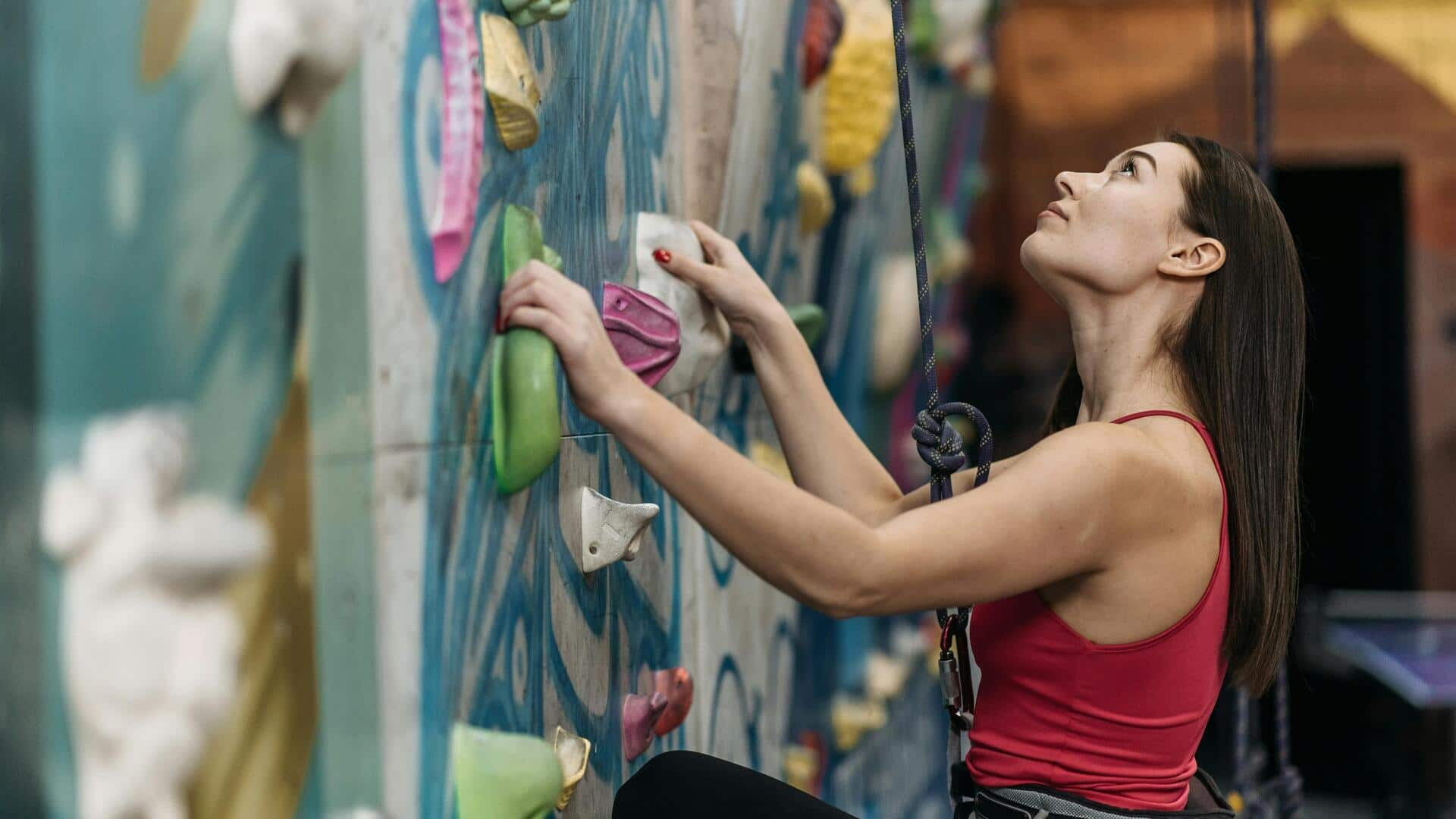Health
Enhance Flexibility Quickly with Effective Wall Exercises

Improving flexibility is vital for overall health and well-being. Recent insights highlight the effectiveness of wall exercises as a straightforward way to enhance flexibility without the need for extensive space or equipment. These exercises can be seamlessly integrated into daily routines, catering to individuals across all fitness levels.
Effective Wall Exercises for Flexibility
Utilizing the wall as a support system allows individuals to perform a variety of stretches targeting different muscle groups. This approach not only increases the range of motion but also helps to lower the risk of injury.
The standing hamstring stretch is particularly beneficial for enhancing flexibility in the back of the thighs. To perform this exercise, stand facing a wall, placing one foot against it at hip height. Keep your leg straight and lean forward slightly until you feel a gentle stretch in your hamstring. Maintain this position for approximately 20 seconds before switching to the other leg. This exercise effectively elongates the hamstring muscles, contributing to improved leg flexibility.
Another valuable stretch is the chest opener against the wall, which targets upper body flexibility. Stand with your back to the wall, extend both arms to the sides at shoulder height, and place your palms flat against the wall. Slowly lean forward while keeping your arms extended until you feel a stretch across your chest and shoulders. Hold this position for around 15 seconds before releasing.
Targeting Key Muscle Groups
The calf stretch using wall support focuses on enhancing flexibility in the calves. To execute this stretch, stand facing a wall with one foot forward, slightly bent at the knee, while extending the other leg back with its heel pressed firmly into the ground. Lean into the wall until you sense a stretch in the calf muscle of the extended leg. Hold for 20 seconds before switching sides.
A quadriceps stretch with wall assistance effectively targets the front thigh muscles. Stand alongside a wall, holding onto it with one hand for stability. Bend one knee, bringing your heel towards your glutes and grasping it with the same-side hand. Keep your knees close together and gently pull upwards until you feel a stretch along the front of your thigh. Hold briefly before switching legs.
Hip flexor stretches against walls provide significant relief from tight hips, which is particularly beneficial for those who spend extended hours sitting. To perform this stretch, stand with your back to the wall, place one foot on it, and gently push your hips forward. This motion creates a stretch in the hip flexors of the back leg. Hold for a few seconds, then switch sides.
Incorporating these wall exercises into your daily routine can greatly improve flexibility and promote overall physical health. Whether you are an athlete seeking to enhance performance or an office worker looking to relieve tension, these simple stretches offer a practical solution for better mobility and well-being.
-

 World3 months ago
World3 months agoSBI Announces QIP Floor Price at ₹811.05 Per Share
-

 Lifestyle3 months ago
Lifestyle3 months agoCept Unveils ₹3.1 Crore Urban Mobility Plan for Sustainable Growth
-

 Science3 months ago
Science3 months agoNew Blood Group Discovered in South Indian Woman at Rotary Centre
-

 Sports3 months ago
Sports3 months agoBroad Advocates for Bowling Change Ahead of Final Test Against India
-

 World3 months ago
World3 months agoTorrential Rains Cause Flash Flooding in New York and New Jersey
-

 Top Stories3 months ago
Top Stories3 months agoKonkani Cultural Organisation to Host Pearl Jubilee in Abu Dhabi
-

 Science3 months ago
Science3 months agoNothing Headphone 1 Review: A Bold Contender in Audio Design
-

 Top Stories3 months ago
Top Stories3 months agoAir India Crash Investigation Highlights Boeing Fuel Switch Concerns
-

 Sports3 months ago
Sports3 months agoCristian Totti Retires at 19: Pressure of Fame Takes Toll
-

 Business3 months ago
Business3 months agoIndian Stock Market Rebounds: Sensex and Nifty Rise After Four-Day Decline
-

 Politics3 months ago
Politics3 months agoAbandoned Doberman Finds New Home After Journey to Prague
-

 Top Stories3 months ago
Top Stories3 months agoPatna Bank Manager Abhishek Varun Found Dead in Well









